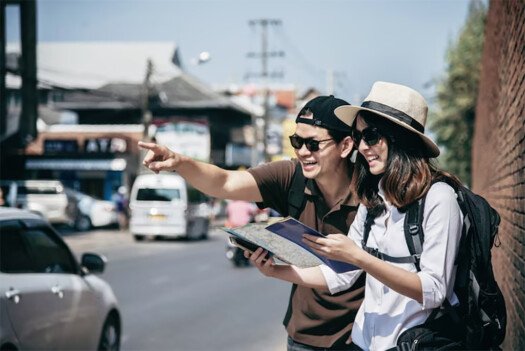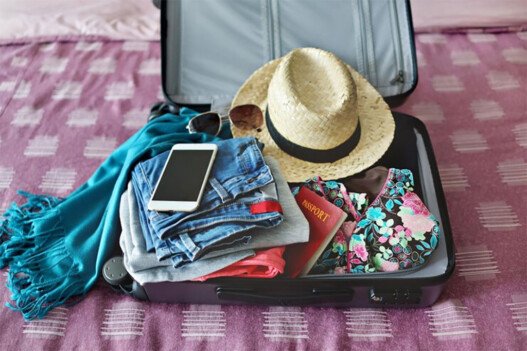Bali is a tropical paradise that has enchanted travelers for decades. With its lush rice terraces, stunning beaches, vibrant culture, and warm hospitality, it’s no surprise Bali ranks among the world’s top travel destinations. But here’s a secret that often goes unnoticed: when you visit Bali can dramatically shape your experience. The timing of your trip is more important than many realize. Choosing the right season or even the right month can make the difference between an unforgettable, magical vacation and a frustrating, crowded ordeal.
In this article, we’ll explore five compelling reasons why timing your Bali trip is crucial. From weather and festivals to prices and crowds, understanding Bali’s rhythms will help you craft a journey that’s perfectly aligned with your desires and expectations.
1. The Weather: More Than Just Sun and Rain 🌞🌧️
Bali’s tropical climate means warm temperatures year-round, but it’s the wet and dry seasons that truly impact your trip. The island has two primary seasons:
- Dry Season (April to September)
- Wet Season (October to March)
Why Timing the Weather Matters
The dry season is Bali’s peak travel period for a reason. With bright sunny days, lower humidity, and minimal rainfall, it’s ideal for beach lounging, outdoor activities, hiking Mount Batur, or exploring temples without interruption.
Conversely, the wet season can be unpredictable. Heavy afternoon showers, sometimes lasting hours, can dampen outdoor plans and affect road conditions. Yet, it’s not all doom and gloom:
- The wet season brings lush greenery, especially to Bali’s famous rice terraces.
- Waterfalls are more spectacular.
- Fewer tourists mean a quieter, more authentic vibe.
Planning Around Weather
If you’re a beach lover or adventure seeker, aim for the dry season. For budget travelers or those wanting to avoid crowds, the wet season can be rewarding, just pack a light raincoat and stay flexible.
2. Festivals and Cultural Events: Experience Bali’s Soul 🎉🕉️
Bali isn’t just about beaches and sunsets; it’s a land rich in culture and spirituality. Timing your trip to coincide with major festivals can immerse you in an unforgettable cultural experience.
Major Festivals to Consider
- Nyepi (Day of Silence): Usually in March, this is Bali’s New Year according to the Balinese Hindu calendar. The entire island shuts down for 24 hours — no flights, no vehicles, no noise. It’s an extraordinary day of silence, reflection, and renewal.
- Galungan and Kuningan: Celebrated every 210 days, these festivals honor the victory of good over evil with vibrant ceremonies, offerings, and decorations.
- Saraswati Day: Dedicated to the goddess of knowledge, this is a day of prayer and learning celebrated across schools and temples.
- Bali Arts Festival (June-July): A month-long celebration featuring traditional dance, music, crafts, and exhibitions.
Why Festival Timing Is Important
Attending these festivals offers:
- Insight into Balinese spirituality and traditions.
- Unique photo opportunities with colorful parades and rituals.
- A chance to interact with locals and understand their worldview.
However, be aware that some festivals like Nyepi involve restrictions on movement, so plan your activities accordingly.
3. Crowds and Tourist Flow: Find Your Perfect Balance 🧳👥
Bali’s popularity means certain times of year can feel crowded and overwhelming, especially in tourist hubs like Seminyak, Kuta, and Ubud.
Peak Tourist Periods
- July and August: European summer holidays drive a massive influx of tourists.
- Christmas and New Year’s: Festive travel spikes increase demand.
- Easter and Local Indonesian Holidays: Domestic tourists swell the crowds.
Off-Peak Advantages
Traveling in the shoulder seasons (April-June and September-October) or the wet season means:
- Fewer crowds at popular attractions.
- Easier hotel and restaurant bookings.
- More personalized experiences and interactions.
Why This Matters
Crowded places mean longer waits, higher prices, and less peaceful experiences. If you prefer tranquility or want to avoid tourist traps, timing your visit outside peak periods is essential.
4. Costs and Budgeting: When to Get the Best Deals 💸📉
Like many destinations, Bali’s pricing fluctuates with demand. Timing your trip can significantly affect your overall expenses.
Peak Season Costs
- Accommodation prices soar during July-August and December-January.
- Flights are often more expensive due to holiday travel.
- Popular tours and activities may charge premium rates.
Off-Peak Savings
- Hotels and villas offer discounts and special packages.
- Flights are cheaper and more available.
- Restaurants and vendors may be more flexible with prices.
Pro Tips for Budget Travelers
- Book flights and accommodations well in advance for the dry season.
- Consider travel insurance in the wet season, in case weather disrupts plans.
- Look for last-minute deals during shoulder seasons.
Timing your trip wisely can stretch your budget further, allowing you to enjoy more experiences without breaking the bank.
5. Natural Phenomena and Activities: Catch the Best Moments 🌊🌅
Beyond weather and festivals, Bali’s natural attractions are also seasonal. Timing your visit can determine what activities and experiences are available or at their best.
Surfing Conditions
Bali is a world-renowned surfing destination. But:
- Dry season (May-September): Best for surfing on the west coast (Kuta, Canggu, Uluwatu).
- Wet season (October-April): Better waves on the east coast (Sanur, Nusa Dua).
Diving and Snorkeling
- Visibility is best during the dry season, offering clearer underwater views.
- Some dive spots are closed during the monsoon due to rough seas.
Wildlife Watching
- Turtle nesting season is usually from July to November, giving travelers a chance to witness conservation efforts.
- Migratory bird watching peaks in different months depending on species.
Sunset and Sunrise Spots
Certain months bring spectacular sunsets or sunrises due to atmospheric conditions — a magical reason to time your visit just right!
Bonus Tip: Bali’s Microclimates Mean Timing Can Vary by Region 🌄🌊
Bali’s diverse geography means weather can differ across the island. For example:
- Ubud (inland) is cooler and less humid than coastal areas.
- East Bali tends to be drier during the wet season.
- Mountains like Mount Batur have cooler temperatures year-round.
If you plan a multi-location trip, consider how timing might affect each spot differently.
Conclusion: Timing Your Bali Trip is More Than Just Picking Dates 🗓️❤️
Bali offers a rich tapestry of experiences — from spiritual ceremonies and cultural festivals to thrilling surf waves and serene rice terraces. But the quality of your experience can hinge on when you decide to go.
Whether it’s basking in the golden sun during the dry season, immersing yourself in vibrant local celebrations, avoiding the crush of tourists, snagging great deals, or catching the perfect wave, timing is everything.
So before booking your flight or packing your bags, take a moment to consider the 5 reasons above. Your Bali trip deserves more than luck — it deserves the perfect timing.









